Background
A few years ago, I came across an article about implantable NFC tags. I liked the idea of a key that you can’t lose, that you don’t have to take out of your pocket, that could open doors and unlock your phone, I liked it, and I decided to order one for myself.
I funded Amal’s Indiegogo campaign to create an implantable tag with a more advanced chip – NTAG216. A few months of waiting – and I have a mark.
Introduction to biohackers
In the small desert town of Tehachapi, north of Los Angeles, GrindFest is held, where “grinders” (lovers of experiments on implanting electronics in the body) can test their devices, share them or brainstorm and generate new ideas.
Biohacking, or grinderism, is the practical expression of the ideas on which Zoltan’s presidential campaign is based. He once wrote that a transhumanist is someone who “advocates the use of science and technology to change the world and help humanity.” This is what biohackers do.
Zoltan promotes the idea of eternal cybernetic life based on technologies that do not yet exist. For example, the opportunity to get an artificial heart that can cope with diseases; intracranial implants that will allow you to communicate telepathically and “send” films and programs directly to the optic nerve; bionic hands that will be so much stronger and more comfortable that people will want to replace the ones they have from birth.
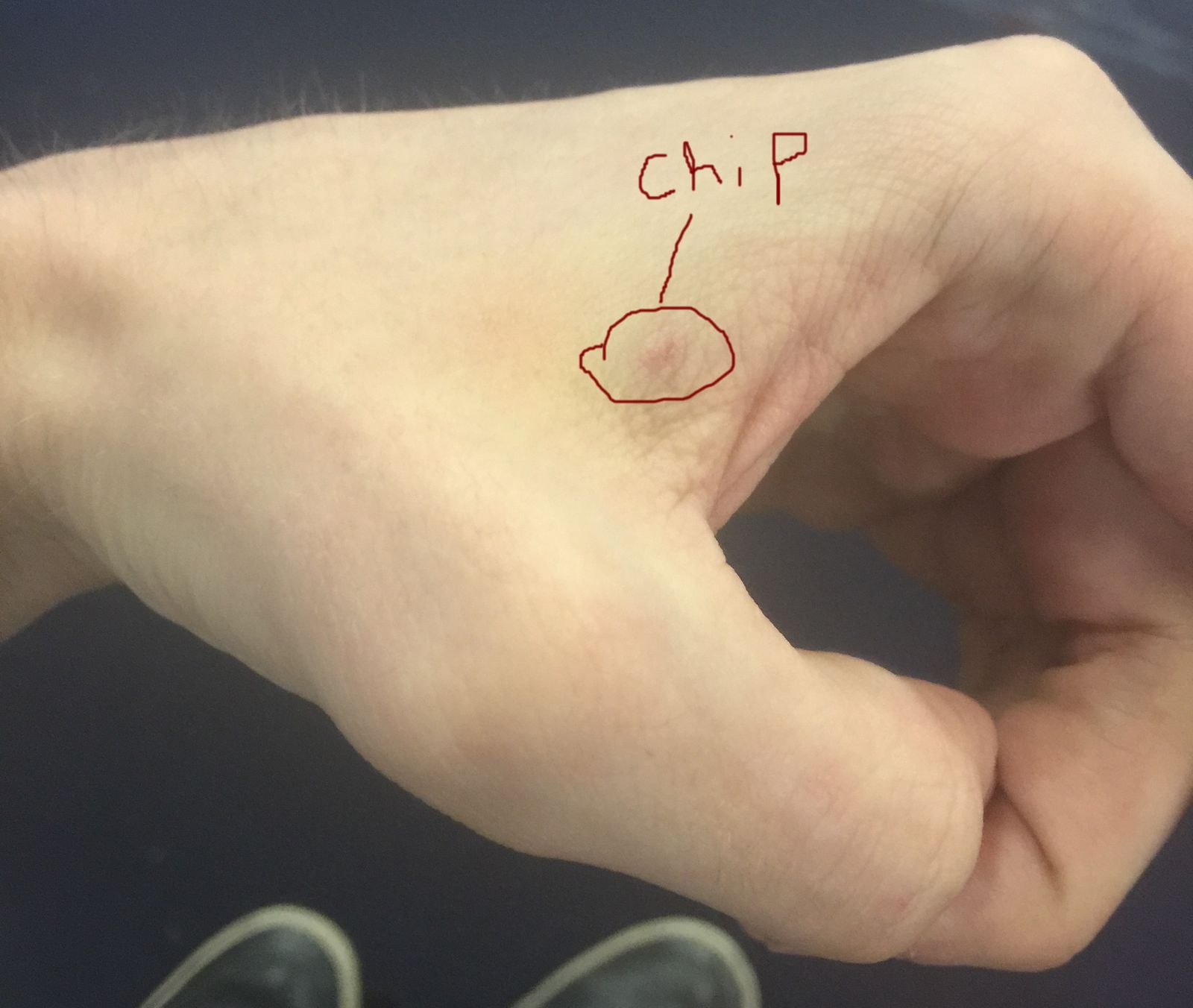
Such technologies do not yet exist. The most advanced robotic heart, developed by French firm Carnat, is still being tested. The first two patients died within 3 months. No matter how wonderful modern prostheses are, they are not yet a full-fledged alternative to human hands. We can’t read minds either.
Thus, if such radical discoveries are only in the pipeline, then the statements of politicians such as Zoltan seem to be speculation. What is the point of the promise of eternal life if even more modest achievements are far from reaching the market?
That’s why the biohacker convention is so important. They won’t be able to extend each other’s lives by 50 years, but they are using technology to slightly increase the capabilities of the human body. They substantiate Zoltan’s speeches with something specific. They are those who use the achievements of technology for transhumanist purposes.

This is what the festival of biohackers looks like from the outside – quite marginal.
The third main type of implant discussed at the event was the tragus implant. For non-otorhinolaryngologists, the “tragus” is a rigid projection of cartilage just above the inner ear. By placing magnets inside the traga, you will become the owner of permanent headphones with which you can listen to music. You connect to your audio source—smartphone, computer, sound system, whatever—using a standard 1/8″ cable.
The sound travels through the battery powered amplifier to the coil necklace. The coil creates a magnetic field that oscillates according to the sound wave of the music. The magnetic field, in turn, moves the magnets in your ears. The movement of the magnets vibrates the air at the ear. “Vibrating air” is, in other words, “sound”. And voila, you’ve transformed your ear cartilage into a speaker.
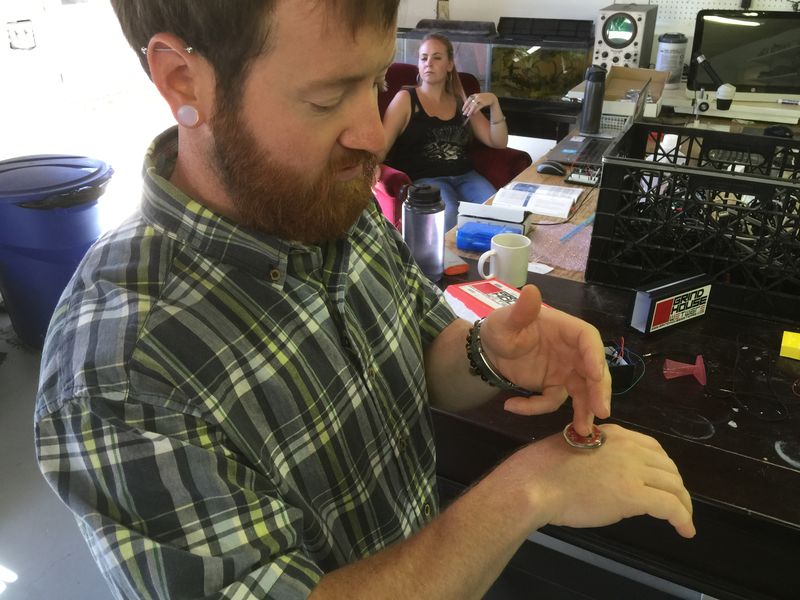
Justin Worst of Grindhouse Wetcare demonstrates the Northstar 1.0.
Justin Worst, biohacker at GrindHouse Wetware, showed off the Northstar, a small disk-shaped implant in his hand. Grindhouse hopes to turn it into a gesture recognition device. At the moment it is still a non-functional prototype that is useful for little more than a light under the skin. But with Northstar 2.0, it will only be enough to wave a finger to get certain information from the phone without resorting to tapping the screen.
Circadia is even more interesting. This is an implant that one of the founders of Grindhouse, Tim Canon, implanted in himself. With it, you can transfer temperature and pressure data to your phone via Bluetooth.
In the future, it will also be possible to transmit more complex data such as blood glucose levels. Perhaps someday, with this technology, it will be possible to quickly recognize a heart attack. Now Circadia is just an innovation. But someday, it’s hard to say how soon, she will be able to save lives.
First mark
Name: xNTStandard: NFCFrequency: 13.56 MHzChip: NTAG216Dimensions: 2x12mmCoating: glassPrice: $99
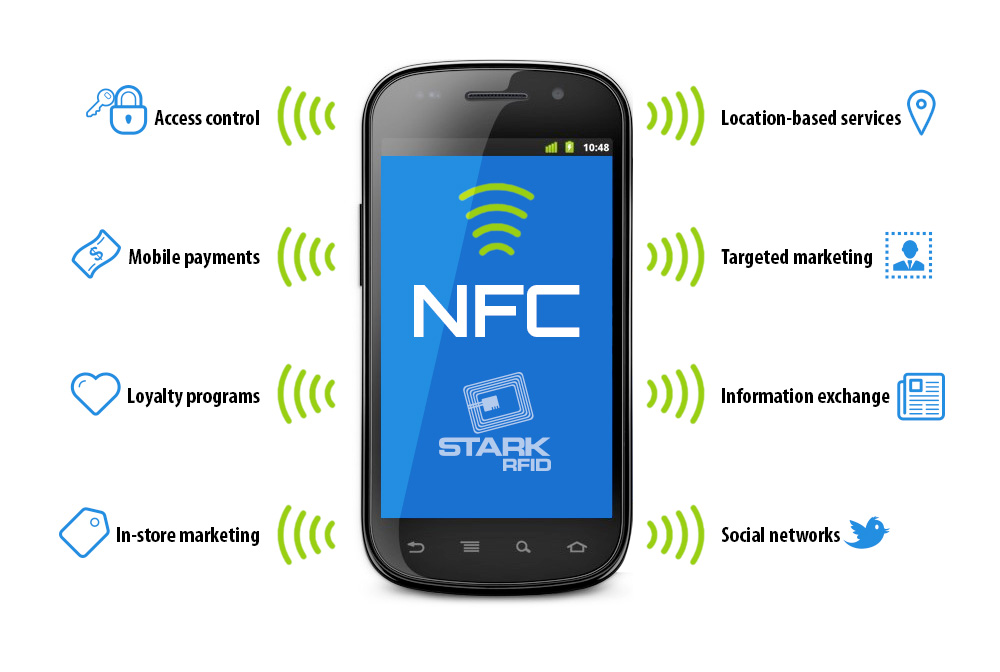
The tag came with the implant kit. The question immediately arose: should I install the label myself, or should I find a professional? After watching the video, where a friend poked an injector into his hand for about twenty minutes, the first option somehow disappeared. Therefore, I found a piercing salon, where they agreed to install an implant for me.
The implantation itself took only a few minutes: in fact, it differs from the injection only in preliminary anesthesia and the fact that the hole in the skin was then sewn up in order to eliminate the risk that the implant would fall out through it. Although, in fact, this is completely optional.
I will say right away: the implant disappointed me.
The lock, which I installed specially for this implant, did not always read it the first time, sometimes I had to run my hand over the reader a second time. The phone practically did not read the implant: it was necessary to find the best reading point for this phone (each phone has its own one), attach the implant exactly to this point and, in most cases, still move the phone around.
About 6 months later, he suddenly stopped reading. After removal and replacement with a new (exactly the same) implant, the old one began to be read. It seems that his reading range suddenly greatly decreased, and he stopped reading through the skin. I still wonder what it was and how it was possible.
Amal legitimately refused to return on the basis that the implant is readable, but sent a new one instead. Since he returned the implant after some time (together with the m31, about which in the next part, so as not to pay for shipping twice), I understand that he simply lost the old defective implant and sent a new one)
The new implant did not have this problem, and it has been successfully used as a key to the front door sometime from September 2014 to the present day.
“This is not surgery”
The Techanapi Laboratory consists of two buildings. In the first, biohackers can drink and relax. The second is a garage, where all the most important things happen. In the main part of the garage, there were a couple of large tables shifted between themselves, strewn with soldering tools, tape measures, pliers and various microelectronics, varying in size from a grain of rice to a one-dollar coin, doomed to be installed under the skin of one of the participants.
Tehanapee Lab Space owner Jeffrey Tibetz gave the tour. On the tables were Petri dishes meant for ‘bacterial races’. Tibet explains.
On the right side of the garage there is an operating room, where all the procedures take place directly. It looked very much like a doctor’s office. This room had a yellow reception chair, a bathtub, a box for the safe disposal of syringes, painkillers and bandages.
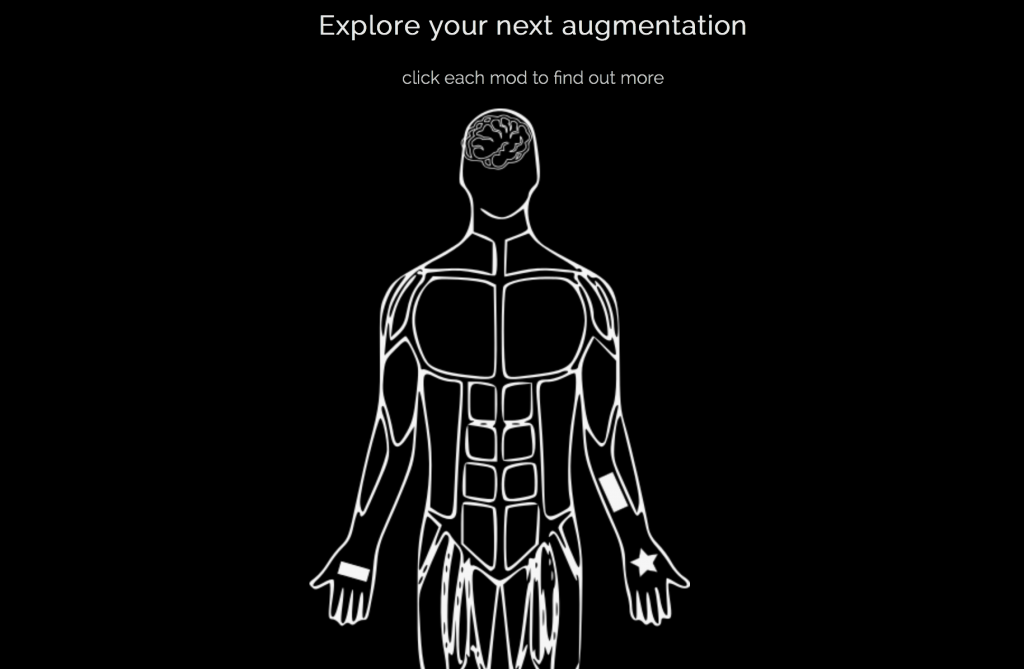
Body upgrades offered by Grindhouse Wetware (screenshot from the official site).
However, the Tibetan does not like to talk about all this as a medical procedure. “This is not surgery because we are not trying to diagnose or cure anything. We are trying to modify our body,” says Tibetz. Piercings or tattoos are not surgery, he continues to reason, and what we do is slightly more serious modifications.
Second mark
Standard: NFC Frequency: 13.56 MHz Chip: NTAG216 Dimensions: approx. 25x3mm Coating: silicone
The master (modificationbody artist, unfortunately, is not translated into Russian, so I will continue to call him that), who installed the tag, offered to simply buy a regular sticker tag and fill it with silicone. Thus, it is possible to obtain an implant, although much larger in size, but with a much greater reading range.
For this implant, I chose the same chip as for the first – NTAG216. So I bought a sticker on eBay with this chip, and the artist filled it with silicone and turned it to minimize the dimensions.
Mark prototype, before turning excess silicone. Over time, pretty wrinkled.
Implantation process (do not open for the faint of heart)
Installation took place through an incision about 15mm long and took about half an hour. Before and after the installation, I took a hemostatic and anti-inflammatory for some time. Thanks to this, the blood quickly stopped after the skin incision, and the edema after the installation subsided very quickly.
The incision took about two weeks to heal.
As expected, the reading range increased very significantly compared to the first tag – the phone began to read it from a distance of about 2 cm. It became convenient to use it to unlock the phone via NFC. Initially, I planned to use it as a key to the front door, but by that time I somehow got used to the old label. And the old one is much safer – it is more difficult to count it unauthorized.
It turned out to be strange for me that it is practically invisible on the X-ray – I expected to see a beautiful antenna pattern, but it turned out that only a barely noticeable round seal was visible. Apparently, the antenna foil was too thin.
The only problem is that the implant is visible under the skin if you clench your hand into a fist. However, if you do not know about it, it is quite difficult to notice it. In fact, only one person has succeeded so far.)
View of the hand at the time of writing
The implant has been successfully used to unlock the phone since March 2016.
Magnets are the most popular implants
Other than RFID/NFC chips like mine, the most popular implants today are fingertip magnets. Such magnets allow you to become a half-finished version of Magnetto. Or if you’ve ever dreamed of becoming the leader of militant mutants fighting for your rights and destroying your enemies by picking up paperclips by magnetizing them to the bottom of your index finger, then a chip like this is perfect for you.
But the main argument I’ve heard is that magnets give you a kind of “sixth sense”. Many of those with similar implants have told me that they were able to feel magnetic fields, albeit faintly, through their fingers. Without magnetic implants, such a feeling was hitherto unfamiliar to them.
Although, one cannot speak of the complete success of such a decision. One of the participants complained to me that the magnets in his fingers interfered with working on the laptop: the computer automatically went into sleep mode, since the approach of his fingers was regarded by the laptop as closing the lid, in which magnets are built in just for this.
Third mark
Name: xEMStandard: EM-MarineFrequency: 125 KHzChip: ATA5577Dimensions: 2x12mm Coating: glassPrice: $57
Initially, I planned to make the silicone implant double: to combine both NFC and rewritable EM-Marine tags (ATA5577 chip) in it. The problem is that the latter are only available in the card form factor. The card had to be dissolved in hot acetone and the resulting antenna with a chip packed in silicone along with an NFC sticker. Its reliability after such a repackaging would obviously have greatly decreased.
However, at the last moment, Amal got a tag with an ATA5577 chip of the 2x12mm form factor already known to us. I remembered the problems with the previous label of this form factor, but decided to take a chance – I don’t really like collective farm solutions)
Injector
Implantation process
In contrast to xNT implantation, the wound was not sutured, because the implant was located significantly further from the needle entry point.
This time the implant didn’t fail. Either LF tags are generally read at a greater distance than HF, or readers are more powerful (probably both), the reading radius completely suited me.
The implant was conceived as a universal key for various access control systems – the vast majority of them use 125KHz EM-Marine tags. For those cases when it is not possible to register your label in the ACS and a chip with the ability to rewrite ID was selected. Tags are copied using a Chinese duplicator for 500 rubles from Aliexpress.
Duplicator
The implant has been successfully used to open doors and turnstiles at work since April 2016.
What is it like to have an implant
Zoltan was the first to have a chip implanted, it’s a fairly simple and quick process. R FID chips are placed into a syringe, like an injection. You need to sterilize the desired area of skin, inject an injection between the thumb and forefinger, insert the chip, and you’re done. There will be some blood, but you can even do without a band-aid. “I never heard of complications with this, that something broke or someone got infected,” says Tibetz.
When implanting magnets in fingers, on the contrary, large incisions must be made, and the infection often enters the body. A rejection reaction may also occur. But RFID/NFC chips are about as secure as biohacking can get. Many people implant chips in the bodies of their pets. If someone’s cat lives with it, why don’t you try it?
Therefore, before we left, I decided to insert a chip into myself. At first, the injection was painful, but then everything went like clockwork. The intramuscular injection seemed much more painful.
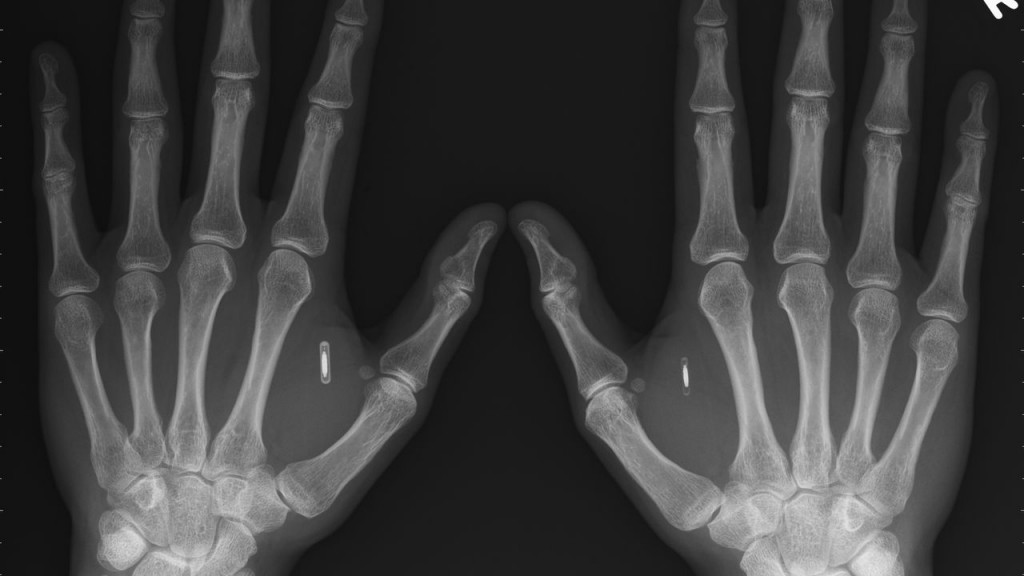
A chip implanted in a journalist under X-ray.
About the future and meaning of biohacking
But in some respects, the biohacker project is ideologically structured in such a way that the modification you get can be both completely pointless and functionally practical. No one argues that the current “bio-hardware” is nothing more than software, but running on blood, it can change people’s lives.
In the meantime, this is more of a fun invention, without any pretense of saving anyone. But, to some extent, biohackers are confident that implants will play a life-saving role. Lee attributes his interest in biohacking to the ongoing deterioration of his eyesight. This innovation would really make a difference if the implants were able to give him superior vision, or improve his hearing to the point where he could perceive echolocation.
Despite all of the above, modifications face a major hurdle: most people don’t want to become cyborgs. They don’t like the idea of being half machine. They do not really want to have chips in their organs that will track their vital signs. This is where the role of the biohacker reaches its climax.
Frankly speaking, this does not give any trump cards, but at this very moment they appear and announce to the whole world “We are here, we are half machines, and we take the best from it.” This helps to create a culture where implants are seen not as something creepy, but as something cutting edge and important.
They are trying to slowly but surely build a solid biohacking subculture that will penetrate the public consciousness as it grows. But the mission they pursue is, on the whole, a general one. “If we have the opportunity to move forward, why don’t we take advantage of it and really move forward?” asks biohacker Jeff Waldrip, also known by the pseudonym “Bird”.
 NFC Expert
NFC Expert